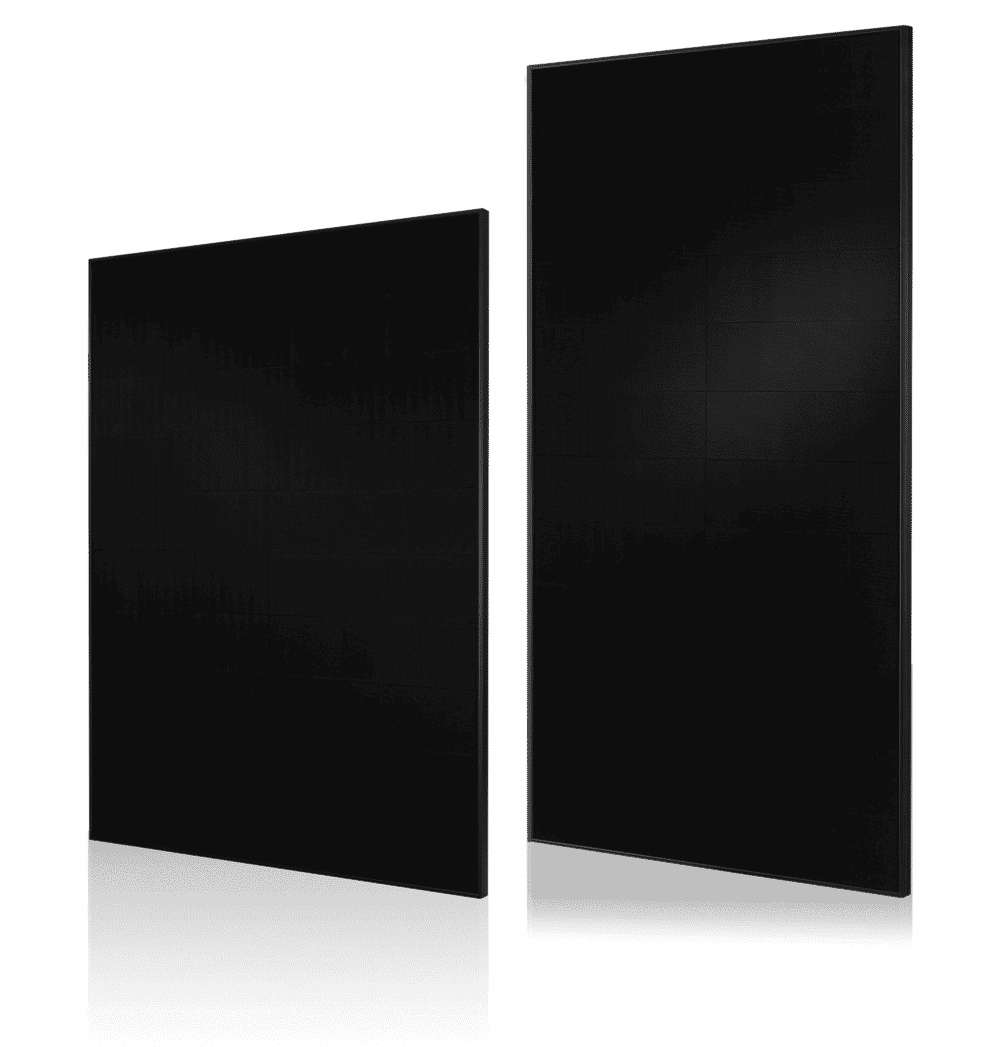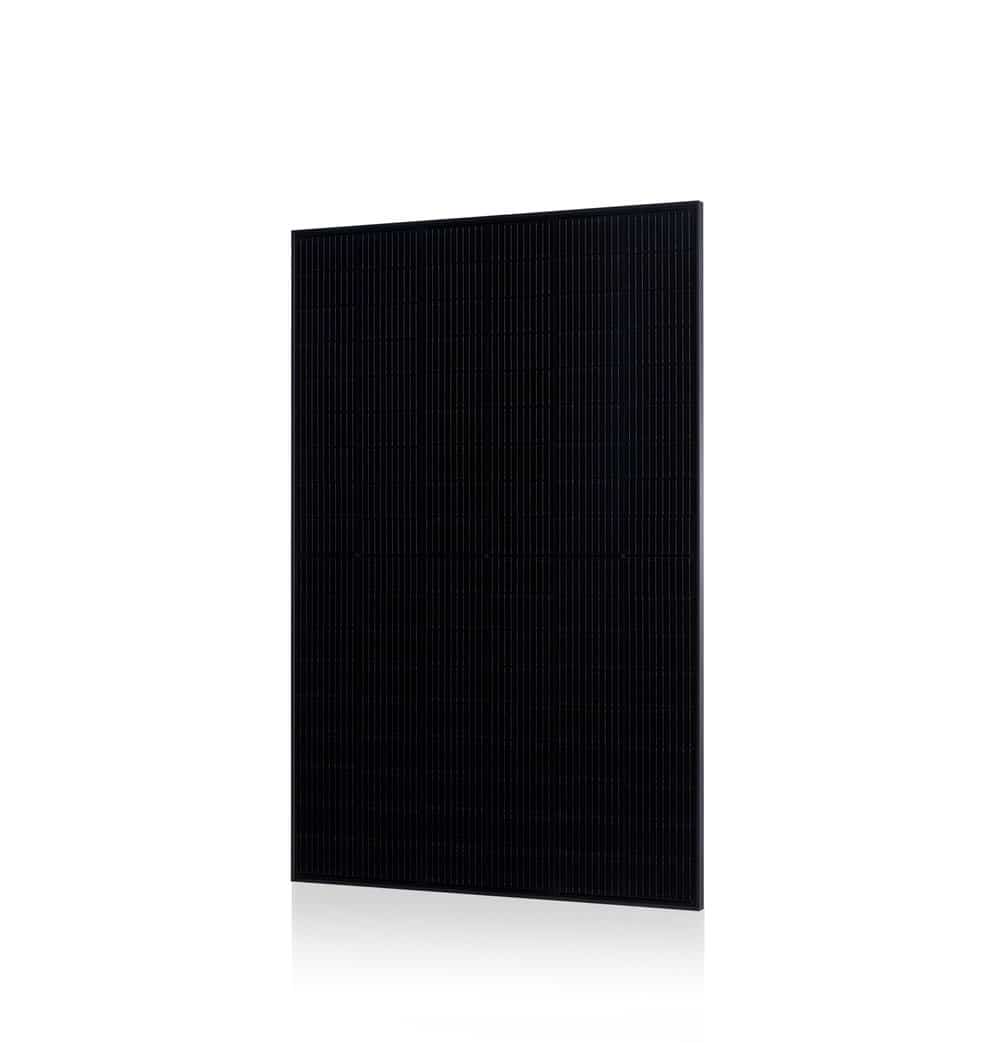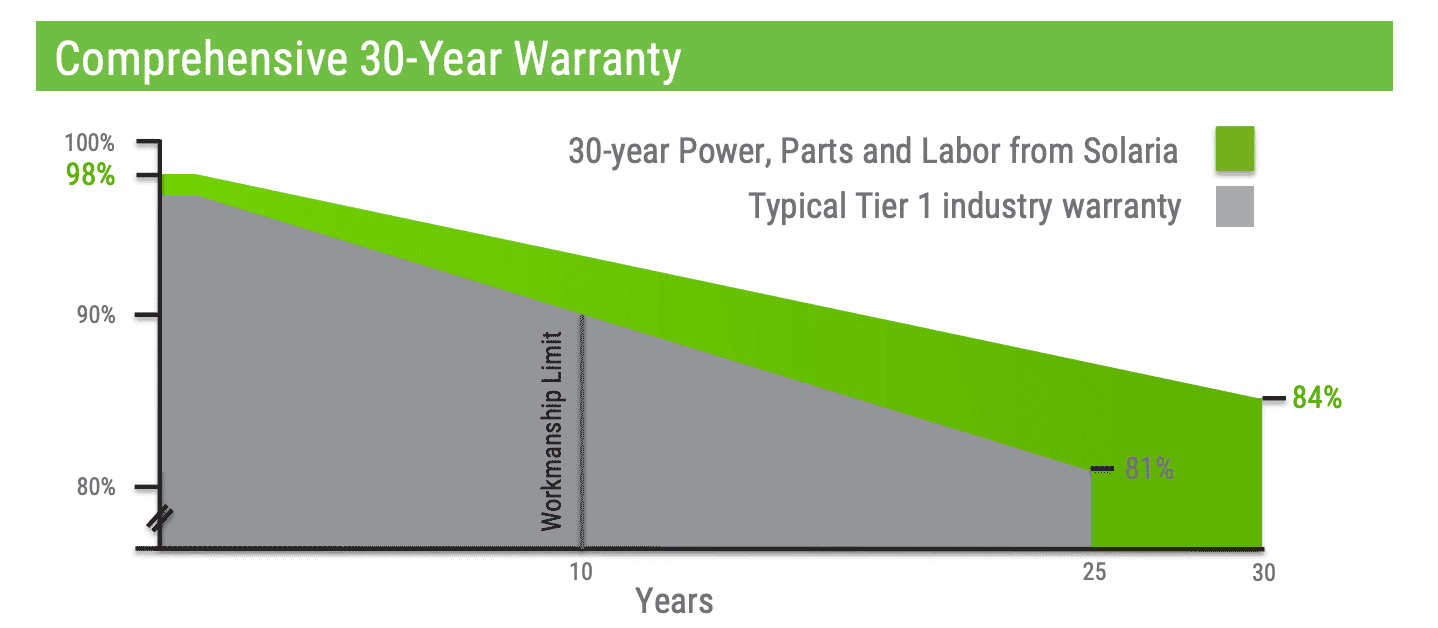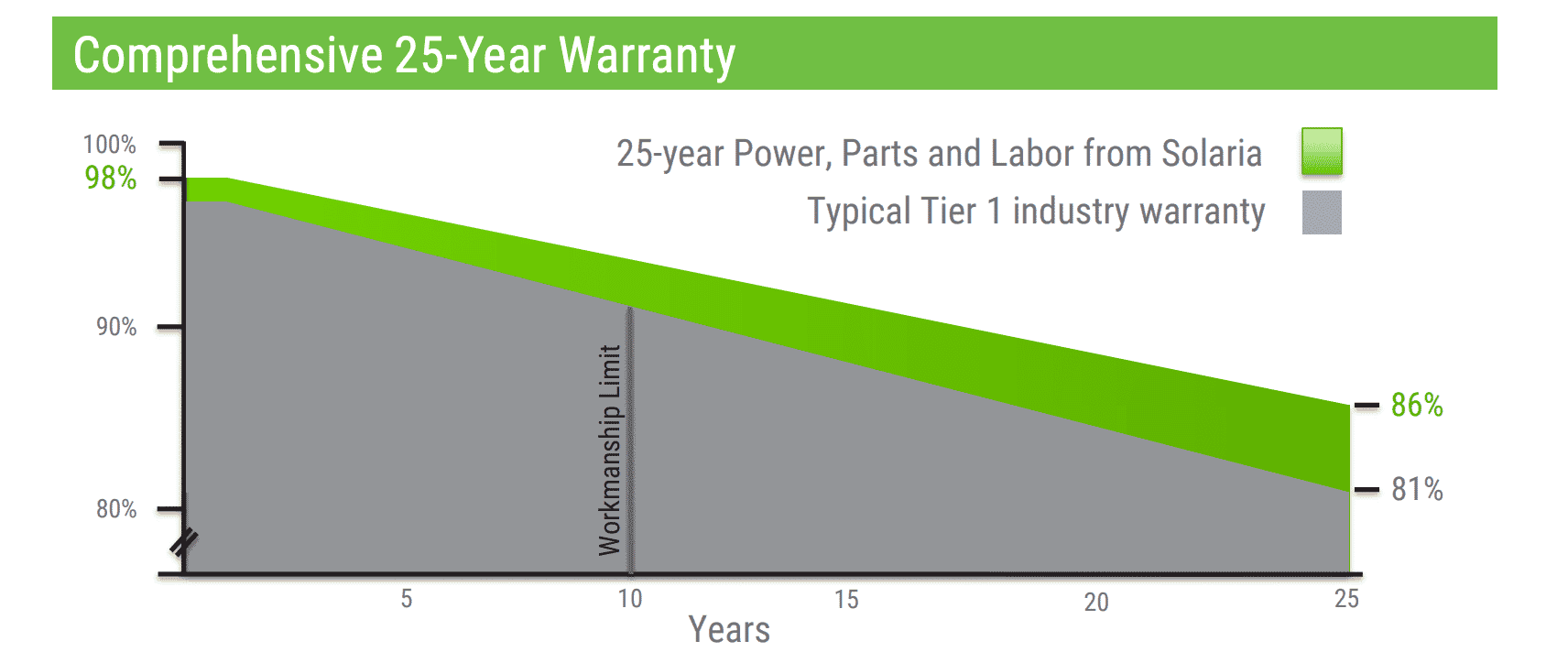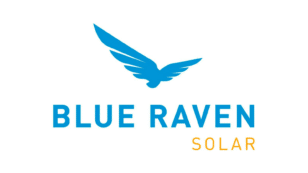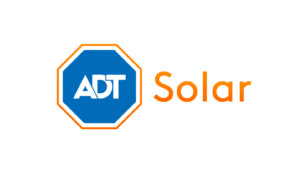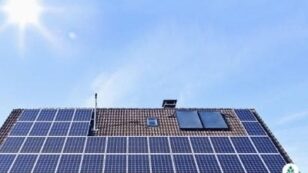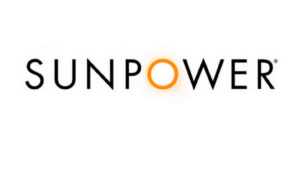
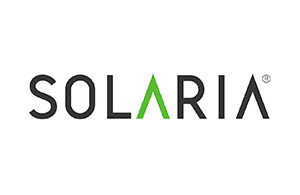
Solaria Solar Panels 2024 Review (Cost, Specs & Performance)
Here’s what you need to know about Solaria Solar:
- EcoWatch Rating: 4.0 Stars
- Efficiency: 20.2% to 20.5%
- Power Rating: 400 to 430 W
- Warranty Length: 25 to 30 Years
Each product and or company featured here has been independently selected by the writer. You can learn more about our review methodology here. If you make a purchase using the links included, we may earn commission.
California-based Solaria Solar has been manufacturing solar equipment for over ten years. Homeowners are drawn to the company’s sleek, powerful and affordable panels which offer a great balance between price and performance.
So, is Solaria a true top-tier solar panel? How do its panels stack up against the rest in the industry? Let’s find out.

Solaria

Average cost
Pros
- Great warranty coverage
- Highly durable
- Power and efficiency ratings among best in the industry
Cons
- Slightly limited options
- Offshore manufacturing
What is Solaria Solar?
Solaria manufactures photovoltaic (PV) solar panels for home energy systems. With a history dating back to 2000, Solaria has over two decades of experience designing, engineering and manufacturing its high-quality modules.
Currently, the company specializes in monocrystalline, high-efficiency solar panels intended for residential rooftop solar installations. Solaria was an early innovator of shingled solar panel technology, an emerging technique in which solar cells are cut and overlapped more densely, creating a panel with more efficiency and a higher power output than most conventional solar panels. The shingled design also allows for better flexibility, improving durability.
The panels’ all-black design allows a solar system made with Solaris products to complement the look of your roof and maintain a low profile.
Solaria’s headquarters are in Fremont, California, where its solar modules are also designed and engineered. Manufacturing takes place in South Korea and Southeast Asia.
| Solaria Fast Facts | |
| Year Founded | 2000 |
| Headquarters | Fremont, CA |
| Operational Headquarters | Fremont, CA |
| Manufacturing Facilities | South Korea and Southeast Asia |
| Corporate Social Responsibility Report | Not available |
What Products Does Solaria Offer?
Solaria offers two primary series of modules: the PowerXT Premium Series and the PowerX Performance Series. Both series are high-power and high-efficiency, backed by Solaria’s technology and exceptional 25+-year warranties.
Check out this helpful review on Solaria’s PowerXT panel.
Solaria PowerXT Premium Series
Solaria PowerXT solar panels are a staple product for Solaria, and the newest generation includes the PowerXT 400R and PowerXT 430R-PL. The only difference between the two is the physical size. The PowerXT 430R-PL is a much larger panel and will take up more space on your roof.
The performance of these all-black solar panels approaches some of the world’s best power and efficiency ratings, reaching 400+ W (watts) and efficiency over 20%.
| Wattage | 400-430 W |
| Efficiency | 20.2%-20.4% |
| Warranty | 30-year and 25-year manufacturer, power and labor warranties |
| Temperature Coefficient | -0.36%/C |
| Data Sheet | Sheet 1, Sheet 2 |
Solaria PowerX Performance Series
Solaria’s newest panel series includes the PowerX 400R Performance, released in 2022. Its power is around the same as the PowerXT models discussed above, but it uses state-of-the-art cell-cutting technology, which increases solar cell density.
A more dense panel increases its energy yield through higher efficiency and improved shade performance without sacrificing power. The PowerX series comes with Solaria’s 25-year warranty.
| Wattage | 400 W |
| Efficiency | 20.5% |
| Warranty | 25-year manufacturer, power and labor warranty |
| Temperature Coefficient | -0.36%/C |
| Data Sheet | Sheet 1 |
Solaria Solar Panel Efficiency
A solar panel’s efficiency measures its ability to convert sunlight into electricity. A solar panel typically has an efficiency rating between 10% and 20%, meaning it converts 10% to 20% of the sunlight that reaches its surface. The best in the business reach a few points over 20%.
Efficiency matters most for homeowners since roof space is typically limited. High-efficiency panels offer residential installations excellent bang for the buck.
Solaria’s solar panel ranges both have efficiency ratings above 20% — ranging between 20.2% and 20.5%. These are excellent numbers that match up with those of the best solar panels in the industry.
Solaria Solar Panel Power Rating
Power rating refers to the number of watts of energy a panel can generate. The higher the power rating of the panels in your solar array, the greater the potential power of your total PV system.
The best solar panels balance power with maximum efficiency. The most powerful solar panels on the market today top out around 450 W. Solaria’s product line is far denser than conventional panels and can reach 400 to 430 W — impressive power for the Californian manufacturer.
Solaria Solar Panel Temperature Coefficient
Although solar panels are designed to withstand extreme heat, they are still all-black, metal objects positioned to capture maximum sunlight. They can get pretty hot.
Temperature coefficient measures to what extent extreme heat impacts solar panel performance. Pay special attention to temperature coefficient if you live in extremely hot areas like Arizona or New Mexico.
The average temperature coefficient of modern solar panels is between -0.3% and -0.5%. A solar panel with a temperature coefficient of -.3%/℃ would lose .3% of its power output for each degree of temperature gained over 25℃. Solaria’s panels have an average temperature coefficient of -0.36% — a strong rating.
Solaria Solar Panel Warranty
There are a lot of moving parts in a solar installation, and the warranty from your installer won’t necessarily cover the quality and performance of the solar panels themselves. If your panels come with defects like glass cracks or if they simply underperform, you want to be sure they’re adequately warranted.
The best solar panel warranties cover the product and its power output for 25 years. Below we’ll describe what Solaria’s warranties cover.
For the PowerXT Premium Series:
-
- PowerXT 400 — 30-year power, parts and labor warranty. This translates to warranting that for 30 years from the date of installation the product will be free from defects in materials and workmanship. By guaranteeing power, the PowerXT 400 warranty provides that the power output of the solar panels will not decrease at a rate faster than that outlined in its warranty.1 Solaria covers 84% output over 30 years — about five years longer than the industry average.
-
- PowerXT 300 — 25-year power, parts and labor warranty. Solaria offers a warranty for defects in materials and workmanship for 25 years and covers 86% output over the same period.
The warranty for the PowerX Performance Series is the same as for the PowerXT 300.
How Much Do Solaria Solar Panels Cost?
The cost of a solar installation can vary significantly depending on where you live, the complexity of your installation and even the company you hire for the job. For this reason, it’s difficult to estimate exactly how much Solaria solar panels will cost you.
Solaria’s panels come in at about the industry average, which offers excellent value given the power and efficiency ratings of their products. We’d estimate that the average solar installation (9 kW) with Solaria panels would cost between $20,000 and $22,000 after the solar tax credit.
Solaria Solar Panels Pros & Cons
Every type of solar panel has its pros and cons. Understanding them can be key to finding the best brand for your needs and energy goals.
Solaria Solar Pros
- Great warranty coverage
- Highly durable
- Power and efficiency ratings among the best in the solar industry
Solaria Solar Cons
- Slightly limited options
- Offshore manufacturing
Are Solaria Solar Panels Worth It?
It’s clear that Solaria’s solar panels compare favorably with those from the best in the business, including giants like SunPower, Panasonic and LG. Homeowners are pleased with the sleek look of their pure black panels blending in with their roofs and providing power from the sun — all without costing an arm and a leg. So what’s not to like?
Although Solaria’s headquarters is in California, the panels and their parts are made in Korea and Southeast Asia, leaving open the possibility of supply chain issues. In addition, the disclosure of Solaria’s supply chain, raw material sourcing and manufacturing facilities is not as complete as we like to see in an industry leader.
Overall, Solaria makes functional, durable and high-powered solar options for a reasonable price that we’d recommend for budget-concerned homeowners.
The cost information presented in this article is derived from a comprehensive analysis, incorporating data from multiple industry sources. The average cost per watt per state was calculated based on figures from Consumer Affairs, Energy Sage, and Berkeley Lab’s Electricity Markets & Policy Department. Additionally, monthly energy consumption and the average monthly cost of electricity were sourced from the U.S. Energy Information Administration, ensuring a well-rounded and accurate representation of the information presented.

 233k
233k  41k
41k  Subscribe
Subscribe 
